Black powder / pyrodex / triple 7
A WORD ABOUT POWDER
When you are using black powder and black powder substitutes it is important to remember that the powder charge is measured in volume not weight. I have used every powder marketed today. Each has its advantages and disadvantages.
I have always gravitated back to traditional black powder. Black powder is a natural blend of charcoal, sulfur and potassium nitrate.
The fuel in black powder is the carbon. Black powder is very inefficient, burning only about half of its mass to create propellant gas. The rest of the unburned powder creates white smoke or a sludge that fouls the bore as a corrosive paste. Black powder is considered an explosive. If you go to most big retail sporting goods store, they will not carry black powder due to safety concerns. Black powder can be ordered online, but due to the hazardous material charges, it is best to order 25 pounds or 50 pounds at a time.

There are several types of traditional black powder. There is an “F” designation for powder; it is referring to the screen size used to filter the manufactured black powder. The smallest grain ‘FFFF’ powder is very easy to ignite, so this type is used in the flash pan of a flint lock. The ‘FFF’ is usually used in .45 caliber or smaller weapons, with ‘FF’ being the usual powder type for most rifle muzzle loaders. The ‘F’ is very coarse and used in cannons and mortars. The more ‘F’s the finer the grain and the faster it will burn. If you plan on using an inline or percussion cap muzzle loader, ‘FF’ black powder is the only powder you will need. If you plan on using a flintlock, a few pounds of ‘FFFF” will last a long time.
Pryodex is a very common black powder substitute. It is the synthetic ‘black powder’ most commonly used by hunters. It is measured the same way as black powder, by volume and not by weight. Pyrodex is bulkier so a similar volume size will weigh less. Pyrodex is corrosive, but it is less impact sensitive than black powder. Being less impact sensitive makes it safer, easier to ship and store so it is found in most retail sporting good stores. Pyrodex is not classified as an explosive.
Triple Seven, GOEX clear shot and Black Mag 3 are other brands that are sold to replace traditional black powder. All 3 are slightly corrosive, but produce higher pressure and velocity. Since they generate higher pressure and velocity, caution should be used when using them in black powder weapons. A lesser volume of these 3 propellants will produce the same pressure as black powder and Pryodex. If you plan on using these 3 brands, start lower than your usual black powder charge. They are still measured by volume, and only consume half of that volume as a gas. The rest of the charge is left over as a solid reside or sludge.
A pelletized form of Triple seven and Pyrodex is available. These pellets are made using a type of rocket fuel propellant similar to the rocket motors used in hobby rockets. It is a lot easier to toss a few pellets down the muzzle of your favorite muzzle loader and ram a ball on top of it. However, the use of pellets can drastically affect the pressures developed. The variation in pressure is affected by the barrel length, weight of the projectile and the caliber. Care should be used when you use pelletized black powder substitute. Very few firearms can handle the pressures developed by 3 pellets of this type of propellant. If you plan on using pelletized propellant, I strongly recommend you do the research and find a firearm that can handle them.
NEVER load black powder from your powder horn directly into the barrel, always use a cup or powder measure. If there is a burning ember in the barrel and you pour directly from the powder container such as a powder flask, you are holding a black powder bomb. I have never seen it happen, I don’t want to. NEVER look directly down the barrel to see if it is loaded. If in doubt, use a ramrod to measure the distance from the muzzle to the breech. If there is a difference in depth of the barrel, it’s probably loaded. Like with any firearm, don’t cover the muzzle with anything you don’t want destroyed. This included your face, hand or arm.

